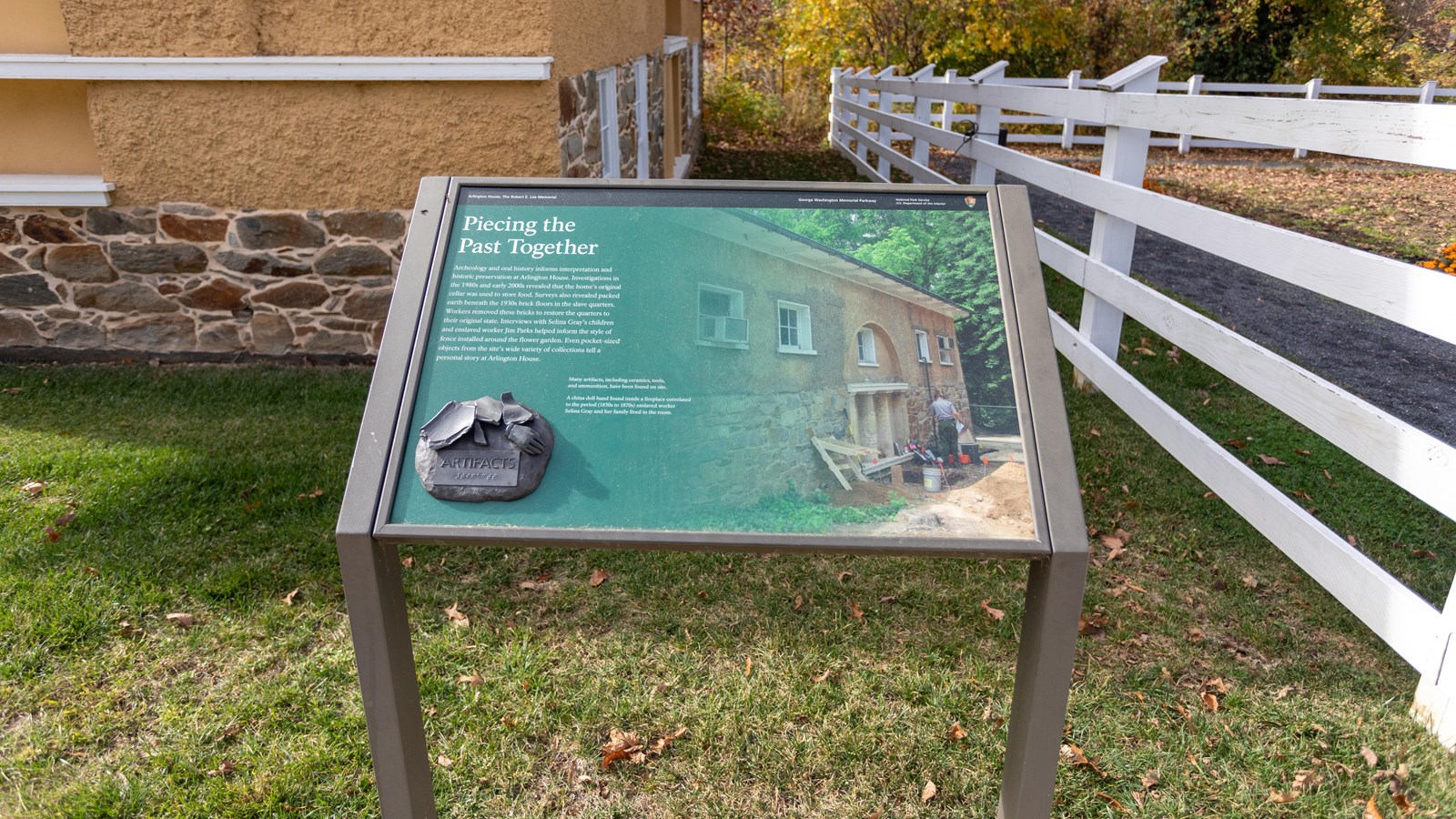Last updated: May 3, 2024
Place
Information Panel: Piecing the Past Together

NPS / Claire Hassler
Quick Facts
Amenities
2 listed
Historical/Interpretive Information/Exhibits, Tactile Exhibit
Archeology and oral history informs interpretation and historic preservation at Arlington House. Investigations in the 1980s and early 2000s revealed that the home's original cellar was used to store food. Surveys also revealed packed earth beneath the 1930s brick floors in the slave quarters. Workers removed these bricks to restore the quarters to their original state. Interviews with Selina Gray's children and enslaved worker Jim Parks helped inform the style of fence installed around the flower garden. Even pocket-sized objects from the site's wide variety of collections tell a personal story at Arlington House.
Many artifacts, including ceramics, tools and ammunition have been found on site.
A china doll hand found inside a fireplace correlated to the period (1850s to 1870s) enslaved worker Selina Gray and her family lived in the room.
Many artifacts, including ceramics, tools and ammunition have been found on site.
A china doll hand found inside a fireplace correlated to the period (1850s to 1870s) enslaved worker Selina Gray and her family lived in the room.
